Yamuna Devi Dasi was a pioneer and a true inspiration in ISKCON. Dedicating 45 years of her life in the service of Guru, Krishna, and Vaishnavas. She was known for a number of services such as leading kirtanas in India in front of thousands and publishing vegetarian Indian cookbooks, which won many awards.
Born Joan Campanella, Yamuna Devi came to ISKCON in September 1966 through her sister, and it was then that she met her spiritual master, Srila Prabhupada.
In August 1968 Yamuna Devi, her husband Guru Dasa, and four other disciples of Srila Prabhupada fulfilled the long-cherished desire of their parama guru, Srila Bhaktisiddhanta Saraswati Thakur, by opening an ISKCON temple in London, England. There was a lack of resources for the six of them, but their faith and perseverance eventually connected them with The Beatles and namely introducing George Harrison to Krishna Consciousness.

Srila Prabhupada and Yamuna Devi Dasi
Her Devotion to Her Spiritual Master
Giriraj Swami recalls the first time Srila Prabhupada’s poem “Markine Bhagavata-dharma” was published in an issue of Back to Godhead magazine and Yamuna Devi read it. “Gurudas, Yamuna, and I got together to look at the magazine, and Yamuna read the poem out loud. It was written in a mood of deep humility and dependence on Krishna, And when she got to the end—“Signed—the most unfortunate, insignificant beggar, A. C. Bhaktivedanta Swami”—she burst into tears.”
She had once asked Srila Prabhupada about the amount of time he actually spent with his spiritual master to which Srila Prabhupada replied that there were only a few, but they were very close. Then he said, “Those who think that association with the spiritual master is physical, they are no better than a mosquito sitting on the lap of a king. And what is the business of a mosquito? Simply to suck blood. So many of my godbrothers, they were big, big sannyasis, and they thought like that, and they simply sucked blood.”
Yamuna Devi took these words of her spiritual master to her heart. She said, “So that was a turning point for me, to realize that Prabhupada was going to leave this planet: ‘He is an old man, and he is going to leave, and I have to prepare.’”
She recalls, “Prabhupada said, ‘I am speaking because you want to hear so much. I am speaking as much because you want to hear so much.’ So he knew that hunger. I never expressed that to him, but he knew.” As Yamuna often said, Srila Prabhupada was completely aware of every disciple in every way—both their internal consciousness and the external manifestations of their service.
She was very strong in reading and studying. Every morning she would read the Bhagavatam and the teachings of the acharyas—Srila Bhaktisiddhanta Sarasvati Thakura and Srila Bhaktivinoda Thakura—taking special note when they spoke about the holy name. This was a major focus for her, and she would relish reading, especially instructions related to nama-bhajana and to guru-seva.
Srila Prabhupada Called Yamuna Devi Dasi a Sannyasini
Srila Prabhupada, “His wife is also great devotee, you know Yamuna. So now Yamuna has taken a very nice path. She has also become sannyāsīnī. Although there is no sannyāsīnī for women, but she has voluntarily taken. She is doing very nice; therefore I advised her husband that “You also take sannyāsa.” Because wife’s affection is very, very tight knot.”
Gurudasa Sannyasa Initiation — San Francisco, July 21, 1975.
About Srila Prabhupada’s Kirtana
She said, “Srila Prabhupada’s kirtana had no tinge of being a performance. It was purely for the pleasure of Krishna. It allowed the chanters access to the fact that the Lord’s holy name and the Lord Himself are non-different. He said that the key to engaging in kirtana without anartha was hearing and studying our literature and that gradually one would rise to the platform of pure devotional service.
In correspondence to Bhakta Carl, Yamuna Devi wrote, “Leading and chanting in kirtana has little to do with how we sound to each other. It has much more to do with how we call out to Krishna and immerse ourselves in hearing the vibrations of the holy names. What a vehicle for experiencing the love of Godhead.”
Yamuna Devi said that to the degree one follows Srila Prabhupada, to that degree things are revealed, and she gave the example of Bhakti Tirtha Swami. She felt that because of his deep connection with the holy name—his dedication to japa, his private time with japa—he was able to perceive Srila Prabhupada’s presence in separation. She said, “Prabhupada freely gave everything to all of us. But it is the individual’s hankering, which leads him to make certain decisions in his life to catch that mercy, that facilitates his or her perception of Srila Prabhupada, especially in separation.”

Yamuna Devi Dasi leading kirtana
The Govindam Prayers
Yamuna Devi led the vocals for the Govindam Prayers, and the recording, composition, and production was done by George Harrison himself. It was released to the public and topped the European music charts.
George Harrison was so impressed by her singing that he told her that he could make her one of the most famous and celebrated vocalists in the world. But she wasn’t interested. Her singing was —pure devotional service to please Srila Prabhupada and Sri Sri Radha-Govinda.
In this context, Mukunda Goswami recalls, “But the devotees in Los Angeles didn’t want Prabhupada to hear this because they thought it was very strange that a woman’s voice would be leading the Hare Krishna mantra. And so they didn’t let Prabhupada hear it. One morning, just before the greeting of the Deities, Prabhupada was sitting on his Vyasasana. When the Deity doors open in Los Angeles, there is a big billow of incense smoke from the charcoals. The devotees use a lot of incense, and when they open the doors, it kind of pours out like a big cloud coming out. So right before this, Prabhupada said, “What about that record that the devotees sent from London?” He had heard about it. But they told him, “It is just Yamuna singing; we don’t want you to hear it.” Then they said, “There is no place to play it.” And he said, “Just play it on the system – the speakers.”
In [the] Los Angeles temple there are very large speakers where they play lectures. They said, “Okay,” and very reluctantly went and fetched the recording and played it. It was just at the right time, and it is about six minutes long. As the Deity doors opened, Prabhupada didn’t say a word. He just listened with his eyes closed. Devotees got to see streams of tears coming down his cheeks. That day Prabhupada ordered that the song be played in temples all over the world at the time of greeting the Deities.
Her Kirtana
Yamuna-devi had a dream and Giriraj Swami recollects it here, “In this dream, or vision—whatever it was, she took it as very real—she was a sage in the forest and Srila Prabhupada was also in the same forest, and somehow he engaged her in doing kirtana. She felt that from her past life there was a connection with Srila Prabhupada in relation to kirtana.”

Yamuna Devi Dasi cooking in her kitchen
Her Cooking
She served as the personal cook for Srila Prabhupada for eight years. This turned out to be an inspiration for her own cookbook entitled, “Lord Krishna’s Cuisine: The Art of Indian Vegetarian Cooking” which won multiple awards, including the International Association of Culinary Professionals Cookbook of the Year.
She later wrote, “For two years, I was part of a group that accompanied Srila Prabhupada on extensive tours of the subcontinent that gave me the opportunity to learn from scores of famous temple brahamana cooks. In some cases, I was privileged to be the first westerner allowed in previously restricted temple kitchens.”
She paid attention to every detail. For instance, once when Srila Prabhupada was coming to Vrindavan, she went to the Vraja-vasis and asked, “What is the best way to make Vraja-vasi rotis?” They told her, “You have to get this red Punjabi wheat berry. You have to grind it in the morning, and then you have to cook it with nima wood.” She followed all these steps involved.
Yamuna devi then went into Srila Prabhupada’s room and placed a hot roti before him. He took one bite and remarked, “This is from red Punjabi wheat berries. You crushed them this morning and used neem wood to cook the rotis.”, she had not told Prabhupada this, he just knew everything. Even then, he had an improvement proposal. He said, “Just one thing. They’ll be wonderful if you fry them for another one or two seconds.”
Her Deity Worship
In 1969, at John Lennon’s Tittenhurst Manor in England, Srila Prabhupada began teaching Yamuna the fundamentals of Deity worship, or seva-puja. Prabhupada taught her how to bathe, clothe, and decorate his six-inch Radha Krishna deities, as well as how to perform arati, using his own six-inch Radha Krishna deities. He continued to train her while she was in India with him, and she began worshiping her first tiny deities in 1971.
When Yamuna was assigned the task of preparing for deity seva at ISKCON’s impending Krishna Balaram Mandir in Vrindavan in 1972, Srila Prabhupada requested her to research the Goswami temples in Vrindavan for deity worship standards, attire, and procedures. And now, a just recently published Yamnua Dei’s Deity Seva teachings are now available to the masses. Read more about The Study of Seva Puja here.
Saranagati Ashram
Yamuna and Dinatarini moved extensively, then settled in Saranagati Village in Canada to live a simpler life and share kirtan, classes, deity seva, and devotional inspiration. It especially recounts Yamuna Devi’s deep empathy and care for ISKCON’s youth, how she spent so much time engaging and encouraging them in Krishna consciousness, and the powerful impact she had on their lives.
Her Deep Sadhana
Giriraj Swami remembers, “In the afternoons when there was some free time, Yamuna-devi would chant in the courtyard. It was very cold in Amritsar in November, but it would be a little warmer when the sun came out in the afternoon, and she would sit cross-legged with her back erect and chant Hare Krishna maha-mantra japa continuously with her eyes closed—nonstop. She told me then that when she chanted, her ears and mind and heart opened up to the holy names and that the names would enter and she would just hear the sound. She would be fully absorbed in the sound, not even thinking that she was chanting the holy names or that these were names she was hearing—she was just absorbed in the sound.”

The Samadhi of Srimati Yamuna Devi Dasi, Vrindavan
Her Last Days
At about 6:30 in the morning on December 20, Yamuna Devi’s constant companion and spiritual confidante, Dinatarini dasi, found that Yamuna had left. Her hand was in her bead bag, and a slight smile was on her face. She looked completely at peace—even blissful. She had been unafraid of death. She had been confident that she would again be with Prabhupada, or somehow engaged in serving his mission.
Her Samadhi
Yamuna Devi Dasi’s samadhi stands alongside Samadhis built for three other late disciples of Srila Prabhupada: Narmada Goswami, who worked with the Bhaktivedanta Book Trust in Mumbai; Purnachandra Goswami, who preached for many years in Russia; and Vibhu Chaitanya Das, the head cook for the Deities, who lived there since Srila Prabhupada’s passing. Yamuna Devi’s beautiful Samadhi has arched dome and is covered with intricate carvings of peacocks, pillars and arches. Vishaka Dasi mentioned, “Although smaller, it is very much in the same style as the Samadhi of Vaishnava Saint Vishvanath Chakravarti Thakura, “Yamuna was very fond of it. Of all the Samadhis in Vrindavana, it was her favorite.”
The front of Yamuna’s Samadhi a plaque reads: “Unalloyed Servant of His Divine Grace A.C. Bhaktivedanta Swami Prabhupada, Founder-Acharya of the International Society for Krishna Consciousness, Yamuna Devi Dasi. May 19, 1942 – December 20, 2011. She knew the art of devotional service, lived a dedicated life of devotion, and graciously and joyfully gave the gift of Bhakti to others.”
For more information you can read “Yamuna Devi: A Life of Unalloyed Devotion” which is a loving offering of devotion from some of the many devotees who were deeply impacted by her.

Malati Devi Dasi, Dinatarini Devi Dasi, and Yamuna Devi Dasi
Her Main Concern
Yamuna Devi was very much concerned about the position of women in ISKCON.
One day Prabhupada had come into his room and Malati Devi Dasi and Yamuna Devi had just made his bed and done whatever else had to be done in the room. Srila Prabhupada responded and said that this is very unusual for a sannyasi to have this service done by women but it was appropriate. He continued, “Sometimes I am like your father and you are like my daughters, and sometimes you are like my mothers and I am like your son.”
In her last days Yamuna Devi said, “But if Krishna does give me some more time, I would like to do something for the women, to support the women, to give a strong voice to the women.”


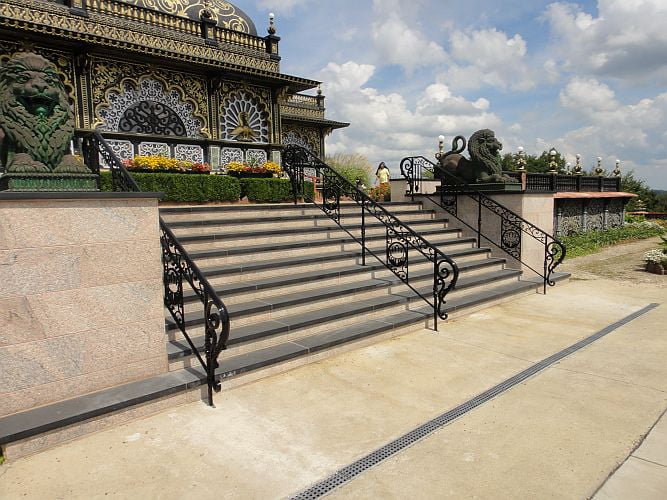
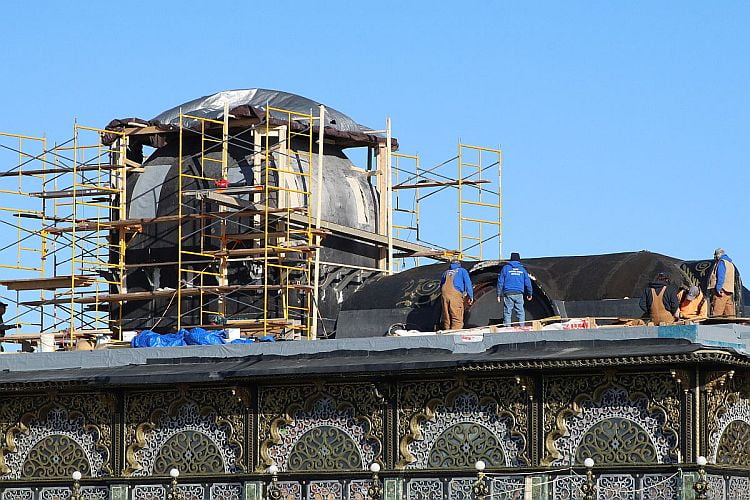
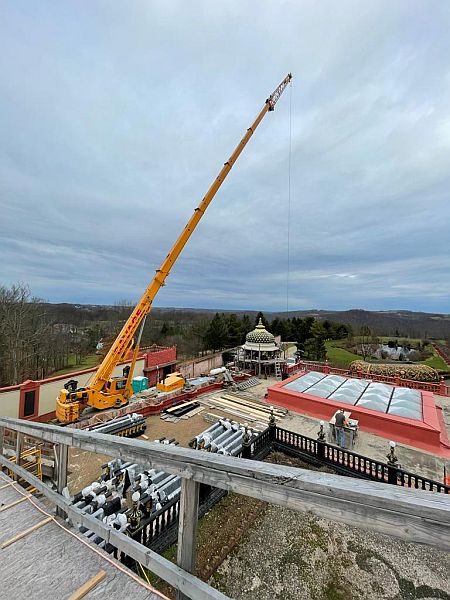
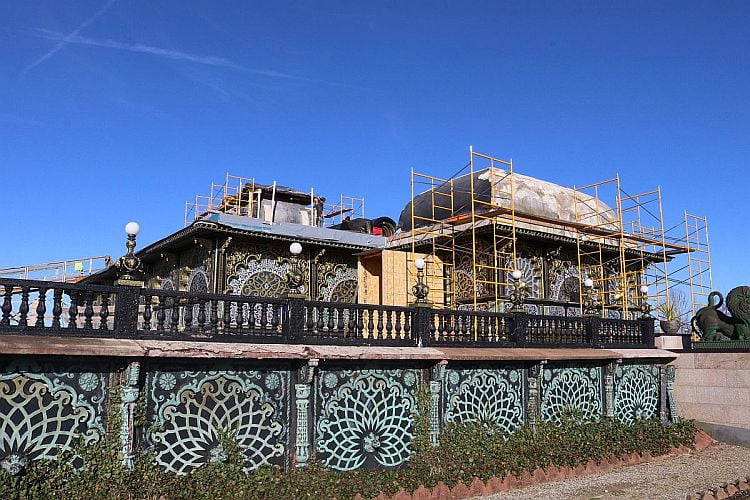

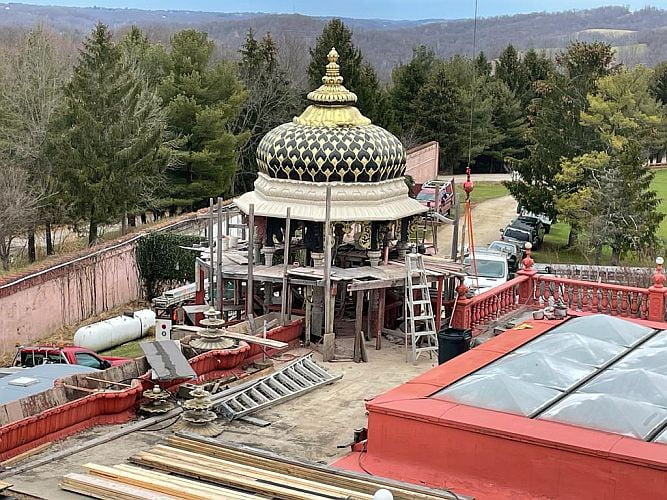
















 By Mayapur Sasi dasa
By Mayapur Sasi dasa










